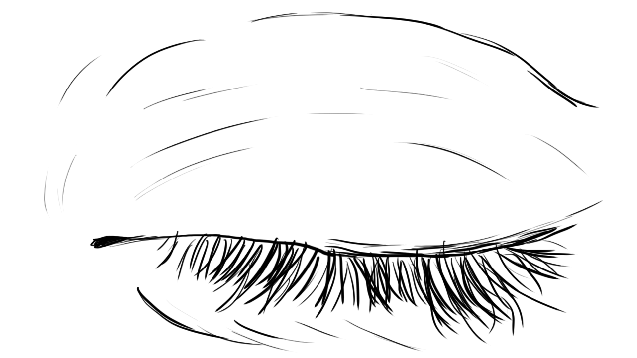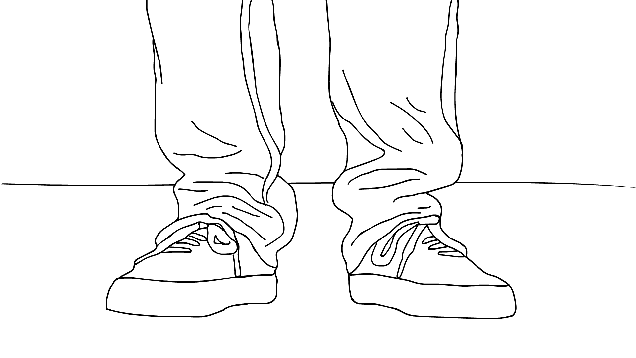30th April – 17th June
After filming, I went through all of the footage I had and selected the best of what I had, separating all of these clips into different scenes, and exporting them separately. As well as this, I did some simple editing in order to create the desired effect I wanted, e.g. overlapping two mirror shots to make it look as though the person in the mirror is moving, but not the person stood in front of it.

I did this to make it easier to animate as I would only need to import one clip into Adobe Animate – the cut between the two shots is noticeable, however, this was unimportant as I’d be drawing over the frames anyway. Once I had exported each individual clip, I started animating in Animate.
Above (on the left) is showing a frame which I have drawn over in Adobe Animate, using a simple black paintbrush tool. On the right is the same frame, however, I have hidden the video in the background (this is how it will look when it is exported).
I screen recorded me using Adobe Animate to drawing over a frame of the mirror clip, showing the simplistic method I use – simply drawing the outline of the main body parts, not even including the facial features. This wasn’t the original plan, however, I didn’t like the look of the facial features being drawn over, as it would need a lot more detail to be successful. I didn’t want to add this extra detail as it would be too consuming, and would take away from the simple design I was producing.
Once I had completed the animations, I edited together what I had in Premiere Pro (this differed from my original storyboard due to underestimating how long the animations themselves would take, which I explained in my problem solving post). I produced 5 different edits of the video, to give me more options on the order of the animation clips. These are the edits I produced:
After doing this, I selected the two edits I liked best (2 and 4). I liked these two edits best as I felt the second edit did well in explaining the disorder throughout, and each piece of text slightly related to the animation which followed it. However, I liked the fourth edit as it left more of a mystery as to what the animation was about, leaving the explanation til the end. As well as this, the information is less likely to be forgotten if it isn’t surrounded by the short animations which may distract from the points being made.
It was important to then put the music with these two edits, to see which fit best. The music I chose was ‘A Model of the Universe’ by Jóhann Jóhannsson. I looked at a number of simplistic instrumentals, however, the slow piano at the start of this song worked very well with the tone of my animation.
I put this music with the edits I had chosen, and produced 3 final edits (two for the second sequence and one for the fourth sequence):
Of these edits, I like the third one the most as I feel the notes of the music fit well with the cuts in the video. As well as this, I feel the order of the clips is more successful in informing the audience on the social issue, and there is no distraction from the information or the short story the animation is telling of someone suffering from depersonalisation/derealisation disorder.
Overall, I am pleased with the final edit of the video, as well as the process of getting to it. This project has been successful, despite having to make some changes to the video itself towards the end due to time constraints. My next and final target is to produce an evaluation of the project as a whole.





